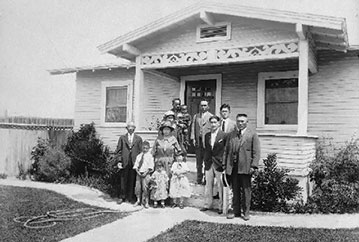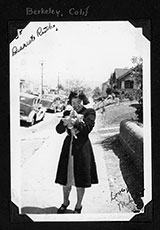
How do I conduct an oral history interview?Because detailed histories of most California Japantowns have not been researched and published, gathering first-person accounts of these places is an important task. We encourage you to identify individuals, especially Nisei, who can share their memories of prewar Japantowns. Anyone can conduct an oral history with thoughtful planning and some basic equipment. Several websites have useful step-by-step guides to conducting oral histories and information about recording equipment: University Of California/Berkeley’s Regional Oral History Office has a One Minute Guide to Oral History and Tips for Interviewers available on their website. More detailed overviews of oral history techniques and issues can be found at California State University/Long Beach’s Oral History Primer and Do History’s Step-by-Step Guide to Oral History.
Having a plan for how your interview can be accessible in the future is critical. Make sure to explain to your interviewee that their stories are important for how future generations and we understand the history of your community. Try to identify a public archive, such as a local library, heritage organization, college or university that will enter the interview into their collection and make it accessible to the public. These archives often have a standard release form that you can take to the interview for your narrator to sign. Otherwise, a sample release form can be found here. ABOUT THE PRESERVATION TOOLKIT HOW DO I RESEARCH A BUILDING OR JAPANTOWN NEIGHBORHOOD? HOW DO I CONDUCT AN ORAL HISTORY INTERVIEW? WHAT IS HISTORIC PRESERVATION? WHAT IF A HISTORIC RESOURCE IS THREATENED? The Oral History Association defines oral history as: "…A field of study and a method of gathering, preserving and interpreting the voices and memories of people, communities, and participants in past events. Oral history is both the oldest type of historical inquiry, predating the written word, and one of the most modern, initiated with tape recorders in the 1940s and now using 21st-century digital technologies."  PHOTOS TOP L-R: Donna Graves, Marie and Harry Sugiyama look at maps and photographs prior to conducting historic resource survey of Petaluma and Sebastopol. Residents of San Mateo organized a barbecue just before WWII evacuation. Photo collection of Bancroft Library. The Oishi family in one of their Richmond greenhouses, ca. 1940. Courtesy of Tom Oishi. |
||
 For interviews about California Japantowns, developing a preliminary set of interview questions that builds on information you may know about the interviewee and opens the door to additional stories is an important early step. Ask the interviewee to share any relevant photographs with you and if you can, look at the images with them prior to the interview. If you have any historic photographs or maps, such as Sanborn maps of the area, they can be great "memory-joggers."
For interviews about California Japantowns, developing a preliminary set of interview questions that builds on information you may know about the interviewee and opens the door to additional stories is an important early step. Ask the interviewee to share any relevant photographs with you and if you can, look at the images with them prior to the interview. If you have any historic photographs or maps, such as Sanborn maps of the area, they can be great "memory-joggers."